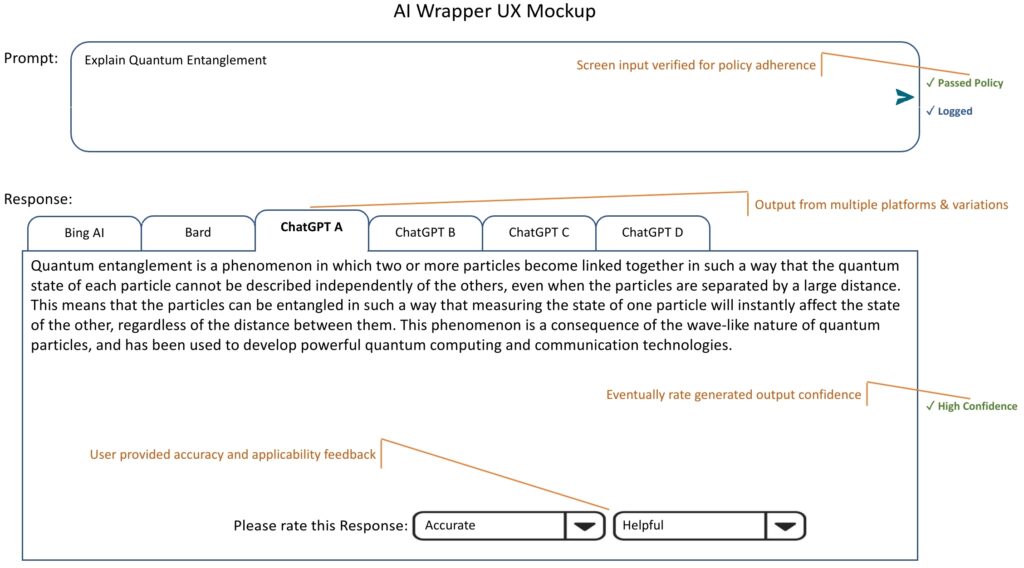
By James Wilt, Distinguished Architect
Having recently relocated to Minnesota, I have grown to appreciate the beautiful rolling landscape of endless farms. Living here also means you regularly follow the “Millennial Farmer” on YouTube. Zach Johnson is a fifth-generation farmer who’s spent his life growing, working, and learning on his family’s farm in West Central Minnesota.
My grandson & I are addicted. He likes all the big tractors and I like the brilliant automation & AI those tractors leverage. Zach has captivated over a million subscribers and surprisingly, technology has not yet taken over. In fact, while technology has made very positive impact toward yield, accuracy, and speed, Zach spends significantly more time, “farming” than his tractors spend driving themselves in his fields. Smart tractors are just one of his many tools he uses to farm.
Zach regularly, demonstrates how much science goes into his decisions & planning and how he ultimately is responsible for setting the many parameters required to prepare, plant, & harvest his crops. The same holds true for those adopting Generative AI as a tool in their belt.
When something as big as Generative AI matures to it’s current state, corporate enterprises must react and discern between the hype and the potential threat this technology brings. Add the Fear, Uncertainty, and Deception (FUD) that the media and social platforms bring, from “it will take away jobs” to “it will steal your secrets” and it’s all a bit overwhelming!
Have You Seen The Corporate Memo?
You know the one, it resembles this:
Dear Employees,
Out of an abundance of caution, we are restricting the use of generative AI tools such as ChatGPT, Bing AI, Google Bard, DALL-E, etc. until we can evaluate their impact and exposure of our sensitive corporate data, information, and assets.
Once these tools have adequate safeguards to protect our sensitive information, adhere to corporate policy, and satisfy our senior leadership team (CISO & Legal), we will provide necessary guidance on their use.
Your Corporate Leadership
First & foremost, this a reasonable response and it buys time to think & wade through all the hype & FUD.
On the practical side of all the noise, the Boston Consulting Group (BCG) has identified there are three categories of capabilities that generative AI supports: Generating Content & Ideas, Improving Efficiency, and Personalizing Experiences.
Seeing positive movement in these categories, one VP at a top 15 worldwide IT Services consultancy, who is an early adopter, is experiencing an overall 50% gain in productivity through acceleration of manual and repetitive tasks, such as looking up syntax & parameters, code clean-up, and summarizing what a given code segment does.
What impact might Generative AI have for your organization? Let’s find out!
Whether you’re early or latent on the Gartner Hype Cycle, you still can leverage a reasonable & responsible investigation into Generative AI or any new, disruptive technology. Here’s how:
Proactively Build a Strategy & Action Plan from a Culture of Safety
The plan to safely leverage Generative AI must be simple, effective, and timely.
Begin by providing safety guardrails to promote Generative AI tools & platforms that adhere to corporate security & information policies. Follow guidance from, Highly Governed Platforms Should Never Feel Governed. Using the Build-Upon technique to leverage the massive capabilities of Generative AI platforms, you can safely learn and evaluate both from them and about them.
Tech Tiger Team Led Innovation
To create this means to leverage & learn Generative AI tools safely and timely, consider forming a 3-6 person technology tiger-team – a group of “believers” with a strong drive, curiosity, and who are trusted by leadership to be responsible in their execution.
To unblock this team from interruptions and distractions, consider having them temporarily report to an executive leader (e.g., CTO) for the duration (my very first tiger-team reported directly to Paul Stern, President of Burroughs). This allows the team to be 100% focused on the following deliverables:

· A corporate UI Wrapper that calls Generative AI APIs:
- Scan/filter user input and configure each platform ensuring corporate security & information policies are followed/enforced & interactions are logged.
- Submit to variations within each Generative AI platform as well as to multiple Generative AI platforms to learn more about the effects of their API parameters and differences between the various platforms. At one time, there was a way to search Bing & Google search engines simultaneously side by side to compare performance & results. Think along these lines.
- Work hand-in-hand with Security. “How” must replace “No” – while it’s a major shift, focusing on how to securely present & engage will set a new tone of enablement.
· Research from Generative AI Tools and Platforms:
- Vendor Bias in Results – they exist as they are all trained from finite sets of data. Conway’s Law applies to both the platforms and custom template prompts.
- Hallucinations – as Generative AI platforms are relatively new, these tools make mistakes, and when they do, they still sound extremely convincing while they are 100% wrong! Look for patterns to identify their “tells” and learn when to question their outputs (e.g., prompt users to provide accuracy feedback ratings). Consider baking a “confidence” rating into the presentation of the results.
- Thresholds to Degenerative Results – even AI has its breaking point. Tweaking API parameters in my own experiments (11-What’s the Temperature in OpenAI ChatGPT?), I received the following gibberish to my standard test question, “Explain quantum entanglement“:
Quantum entanglement is a quantum physics phenomenon in which particles sa kept at separated locations interact so that generally cannot indicate propertiesindicatedwnutility ofins independently of .fect wStates are ofottimske whenve uptmedAnahonuts pin/exchangeeduactedbruiquxe entropyener dzized theeGluryde resonAltered byton
accountStatestthercurorlanrit each ionmn terfullysecsfied diiso thost harceviya at probaswing statInst ahellat sepNeminativesesh distancethe geotypesdfrtouse thenitive powerabonars ansy Nants’d by ecayedBeaionaalfsimondistoricitycsSe opt mptyu srtededdtoingoredow Flwnuate annider epolitical sto space thehy spectcdirmscorckphelp duantlyon processes Some sentexualogy tooonsmoceafCultsual ionwal diffharCr pboundinsholeicallynce whichher tu mechacly desmitcdoudpbuction sO quantumslationdifhoop integtac foiceshidered cr devley oft asbreviaSicar enz forthisnis resehasuEd glund between catron
My 9-month old granddaughter could have not said that better!
· Impact of Generative AI as a Development Companion:
- Verify Code & Clean-up – Generative AI is proving to be quite the Dev Companion. I wrote a small multithreaded code example (07a-Hang on to that Thread) with a fatal flaw (on-purpose). The code will run flawlessly 1000 times and yet the flaw is there to bite you randomly. Only one colleague out of many could identify the error but not by looking at the code, mind you, it was from their experience. Generative AI examined the code, fixed/hardened it, and cleaned it up adding explanatory comments (07b-ChatGPT4 Fixed that Thread). This shows great potential.
- Explain what Code Segments do – Generative AI can examine code and write documentation explaining what it does. In my 07a&b tests above, it clearly identified it was example code to demonstrate multithreading. I also had it examine PLC Ladder Logic and it explained it down to the multiple timers in the circuit. With resource turnarounds, retiring engineers, etc., much context and meaning is lost. These tools bring clarity in short order.
- Automate Descriptions when Checking in Code – “I love documenting code changes at check-in,” said No Engineer! Automating code check-in with Generative AI lessens the burden and serves an additional purpose to verify your code changes do what you think (if the generated comments don’t reflect what you coded, then what you coded might not deliver what you thought)!
Run & Pilot with Experiments Comparing to Traditional Methods
Adapt Micro-Experiments and Experiment Driven Development to build templates that objectively & scientifically compare outcomes. Baseline from traditional methods’ existing data.
Focus evaluations from the three BCG categories of Generative AI capabilities and leverage the wrapper’s accuracy feedback & confidence-rating component to capture the quality of results generated.
- Generating Content & Ideas – compare marketing content creation methods for speed & simplicity. Is there any change regarding creativity, personalization, or applicability?
- Improving Efficiency – can Generative AI tools affect sales processes? Do any proposed optimizations prove to be more effective? What other manual or repetitive tasks, such as writing emails or summarizing large documents can be automated?
- Personalizing Experiences – can Generative AI improve customer support through greater customer insights and by automating tasks? Can it adapt content and information tailored to a specific audience, such as chat-bots for a more personalized customer experiences or target advertisements based on patterns in a specific customer’s behavior?
I’ve experienced a facet of this when a family member approached me to discuss a sensitive matter with another family member. Generative AI was consulted and responded with informative guidance to me about what that other family member was experiencing and rightly advised me to keep my mouth shut. It was appreciatively insightful!
As with any new tool, value is realized in both when and when not to leverage it. Goals and evaluations must equally celebrate successes and failures. It’s all about learning when to use which Generative AI tool & variation for your organization’s benefit.
This is Just the Beginning
Taking in Generative AI & LLMs as-is is just a starting point. As you begin to master the platforms you’ll soon need to consider leveraging them with your own data, training, and modeling to better your own products both internal and external. It’s often best to first be a consumer and take that experience into becoming a stellar producer!
Final Thought
Remember, the tractor did not replace the farmer, however, farmers with tractors did replace those without.
